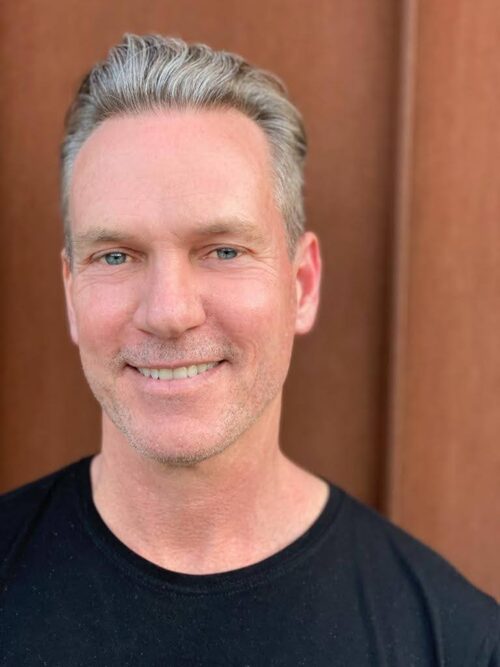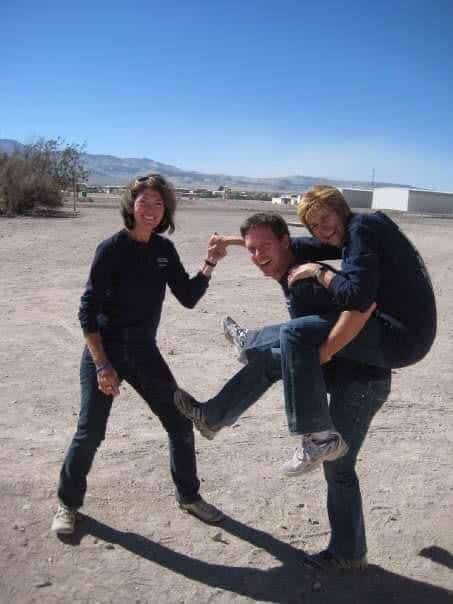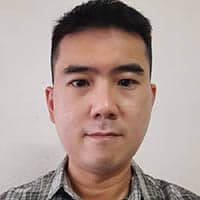
Meet Michael Siebert, Traveling Optometrist and Volunteer with OneSight
By Teh Chin Liang

Michael Siebert has been actively involved with OneSight charity, Volunteer Optometric Services to Humanity (VOSH), and The Lighthouse Heiken Children’s Vision Fund (Florida Heiken Children’s Program LLC) providing charitable eye care to children and others who cannot afford eye care services.
He has participated in 18 international OneSight clinics to help children and adults in poverty-stricken countries to improve their vision. In addition, He participated in an outreach clinic to Mount Isa and Cloncurry.
Q. After your teaching residency in Europe as a Clinical Professor, you started engaging in a series of volunteer work. Tell us what drew you to this line of work that requires you to live out of a suitcase most of the time, instead of starting your own practice back home in the US?
When I was teaching in Europe, a colleague of mine whom I closely worked with had been doing some volunteer work with different groups. When we returned together to the US, I decided to fly to Nicaragua with him and we did a clinic there that involved GPs, nurses and all kinds of other professionals to provide healthcare for those in need.
The clinic was a major collective effort. It wasn’t limited only to eye care. We even provided wheelchairs to those in need.
I was deeply impressed with the experience. It stirred up my enthusiasm to get the ball rolling. It was about a year later that I started working with OneSight and my first mission took me to Bolivia.
Q. You have participated in 18 international OneSight clinics all over the world. What is your first recollection of your first clinic and how did that first experience lead deeper into what you ended up doing?
The beauty of the clinic in Bolivia is the opportunity to meet some of the most wonderful people and make lifelong friends. Back then, we would see 2,000 or maybe even sometimes 3,000 patients a day with only 6 doctors on site. So, it was really a lot of work. We had a very early start every morning and the day stretched to an interminable length.
Taking a bus in Bolivia could be a nerve-wracking experience. There was once when our bus broke down on a mountain and we had to wait hours and hours for a replacement bus to come. When the bus drove through the mountain, a group of contractors was dynamiting the rocks, making the already treacherous journey even more dangerous. The bus was moving closer to the cliffs that at some points it felt like we were precariously hanging off the edge of the cliffs.
In addition, we were generally hosted by the Lions Club. After the clinic, we would have a large meal together at one of Lion’s member houses. This was always a highlight of travel to meet other local volunteers and share a meal with them and celebrate the success of the clinic.
Q. What are some of your best and worst travel memories?
One of the worst memories is when I was in Honduras, I stayed at a poorly maintained place where the tap water always came out brown. I remember when I pulled the shower curtain open, the tub was full of cockroaches running around. Everyone was forced to take a shower in a pool. Later, a crew came in to fumigate, which made things even worse, the whole house reeked with a pungent stench that kept me awake the entire night.
Another horrible experience was in Burkina Faso. One day, we were on our way to the clinic when our own bus driver tried to hijack the bus in broad daylight. They would not let us go unless we handed over all our money to them as a form of ransom; however, one of the volunteers spoke French and was able to persuade our driver to continue driving us to our destination without any issues. We were shaken by the incident. On our way back from the clinic, two burly guys brandishing a machine gun were on board the bus with us to keep everyone safe.
And here are two good OneSight travel experiences:

The first one was when I was doing a clinic in Sofia, Bulgaria. Towards the end of the clinic, a petite lady came up to me for her eye exam. Her name is Margarita. One of the lenses in her frame was broken and her eyeglass prescription was one of the highest I have ever seen.
We didn’t have any glasses left. After flying back to the US, I had the glasses made for her. I was going to mail them to her but the address she provided to me seemed to be incomplete.
I was concerned that she might not have been able to receive them. I ended up flying back to Sofia with a friend of mine and hand-delivered the glasses to her doorstep. She gave me her broken glasses in return and I still have them with me today.
The other unique experience I had was when I went to the Atacama Desert, which is the driest place on the planet. The weather is extreme — often going from freezing in the morning to blistering hot in the afternoon.
One of our clients couldn’t come to the Onesight clinic, so I went to visit her in the village. We had a bit of chit-chat in Spanish. I was delighted to have been able to sort out her prescription and gave her the glasses on the spot.
Q. If you ever recommend this volunteer work to other optometrists, what caveats do you have for them?
The caveat for doing this work is you have to be flexible and creative because on many occasions you might not be able to help people.
There are many unforeseen circumstances that require you to figure out a way to make things happen since you don’t have access to everything that one might be used to. Flexibility and creativity are key. It is not a vacation. A lot of people might go thinking it is a chance to see places, but the truth is, you work really hard around the clock to help those in need.
Q. What’s a typical work routine for a typical OneSight clinic?
When I volunteer at a clinic, I usually get up quite early around 5:30 to 6. There are usually about 40 of us volunteering. After having a local breakfast at the hotel, a big bus would come and pick us up, and off we go. We usually work 8 to 5 or 8 to 6 every day.
There would be a total of 5 stations at the clinic. The first is where we conduct a health history assessment. The second is to check vision and visual acuity. The third would be using automated testing to determine the correct prescription for eyeglasses.
The fourth is where the eye doctors are stationed to conduct health screening tests on our clients. Another group of doctors is at the fifth station to determine the right pair of glasses for the clients.
Q. I understand that you had spent a few years in Australia to provide routine optometric care in rural Australia and New Zealand. You also did a clinic in Mount Isa, Australia to help indigenous kids. What do you find the most rewarding about the mission and what situations usually hamper you from being the best that you can be?
I remember examining a young indigenous kid. It is not customary in the indigenous culture to look people in the eye. Imagine how hard it was to examine this kid because he was constantly looking down. It was quite a challenging task for me.
His teacher was next to me and she knew something was wrong with his vision and that he probably needed a pair of glasses. It took a while for us to sort it out and I finally put a pair of temporary glasses on him.
With a pair of glasses resting on his nose, he pranced around the room in pure joy. I won’t forget the look of utter surprise on the teacher’s face. It was very gratifying and touching for me to see that.
Regarding the situations that hamper me from doing my best, one thing is you don’t always have access to the best equipment. I get frustrated at times because I can’t get my hands on the best possible tools to perform a diagnosis.
It is even disheartening when I am in the regional stores and find out they do not provide the top-notch equipment to enable us to deliver the voluntary service to the best of our ability. I never like to feel that I am not providing the best possible care to anyone.
Q. Are there any interesting facts or insights that outsiders might not know about the volunteer work with OneSight?
Being a traveling optometrist is a unique position that offers a lot of freedom and flexibility. It merges many things together that I love and that is primarily, the profession that I am passionate about, number two, traveling and number three, photography.
Having spent ten years traveling around Australia was a real gift for me. I have been very fortunate to live that kind of lifestyle. It certainly has its challenges. You have to be willing to go out there and make new friends wherever you go.
I am constantly moving from one place to the next with a frequency of a few weeks, a few months, but probably no more than three months. Usually, it is in the range of 4 to 6 weeks.
I always do my best to immerse myself in any community that I am placed in. Fortunately, I have friends all over the country and the world for that matter.
Q. How do you like working with your cohort colleagues from all over the world?
OneSight really does bring people from all over the world together. There are volunteers and doctors coming from all over the world – Italy, US, Canada, China, etc.
It is a wonderful experience to get acquainted with people from diverse backgrounds. Usually, the volunteer group consists of 40 people coming together to serve the same purpose.
Q. What are you currently doing and what are your future plans?
I spent most of 2021 in South Carolina, in a small town of about 35,000 called Spartanburg. I’ve been here for almost a year and I really love the town; however, recently, I moved back to Australia about four weeks ago and I have already been in four different cities. On the road again.
Q. Tell us about your nomadic lifestyle as a traveling optometrist?
As a locum optometrist, I find myself in a different city every 2 to 4 weeks. I travel with essentially everything I own and have clothing for just about any climate. I have one 32-kilo suitcase and one other carry-on for things that I like to have nearby.
This nomadic traveling optometrist lifestyle provides me the opportunity to travel for my own personal enjoyment on the weekends/holidays as well. Just in the past five weeks, I have visited the following areas:
The Flinders Ranges, South Australia (SA); Clare Valley, SA; Coffin Bay and Port Lincoln on the Eyre Peninsula, SA; Adelaide, SA; McLaren Vale, SA; Sydney, New South Wales (NSW); Merimbula, NSW; Bega, NSW.
That is quite a tour of two states in Australia in the past few weeks. I have been doing this for almost eleven years and continue to be thrilled to have these opportunities
Q. Who is the biggest influence in your life?
My motivation to volunteer comes from a family that I lived with when I was 17. He is a general surgeon. His name is Tom McElroy. He did a lot of volunteer work in Africa. He would fly to Africa and perform a lot of surgeries. He has had a great influence on me. He was the reason why I go around the world and follow in his footsteps.
One nice thing about my job is whenever I am in a bad mood, I can go to work and help somebody, and that mood is gone within seconds.
 Teh Chin Liang is a long-time travel journal contributor to Dave’s Travel Corner and Global Travel Insider. Besides travel journals, he loves writing prose and poetry. When he is not writing, he enjoys reading and traveling to get inspiration for his writing. He lives in Penang, Malaysia, a scenic island city that is also a UNESCO heritage site.
Teh Chin Liang is a long-time travel journal contributor to Dave’s Travel Corner and Global Travel Insider. Besides travel journals, he loves writing prose and poetry. When he is not writing, he enjoys reading and traveling to get inspiration for his writing. He lives in Penang, Malaysia, a scenic island city that is also a UNESCO heritage site.
- Penang’s Chinese New Year Extravaganza! - March 30, 2024
- Hidden Gems Along Istanbul’s Golden Horn and Eyüp - March 3, 2024
- Dining with Locals in the Faroe Islands - February 19, 2024


Handsome doctor 🙂 that for sure. I like these story. It tell a selfless life and devoting one’s life in services of others need. Most of all able to travel nomadic to places where help is needed. Kudos Dr.Michael Siebert. Nice interview – to the writer.